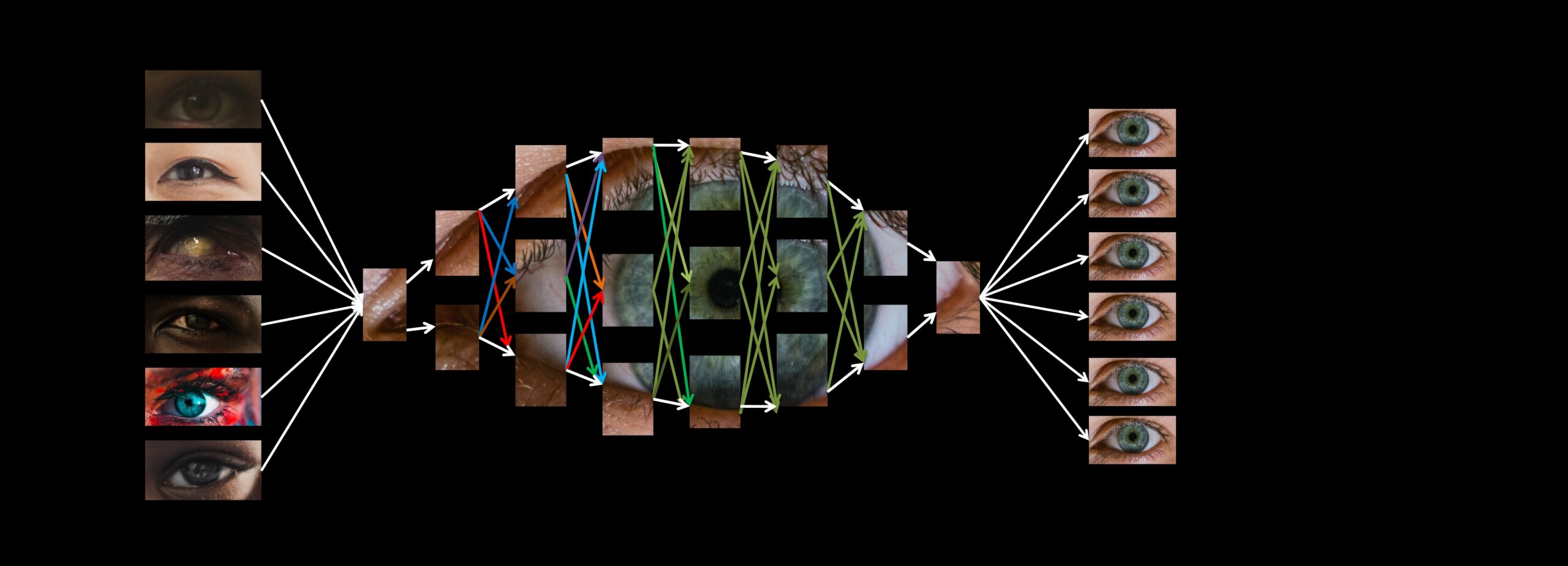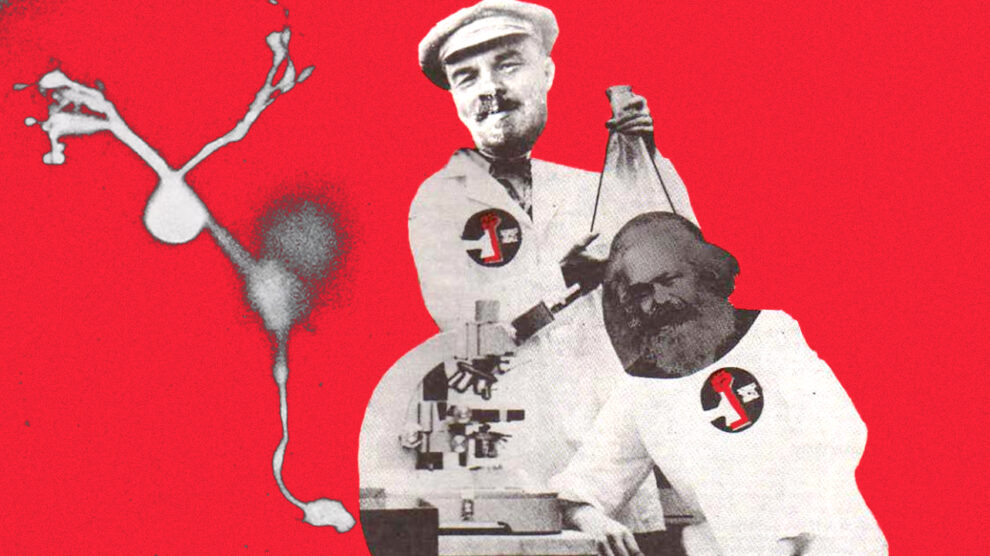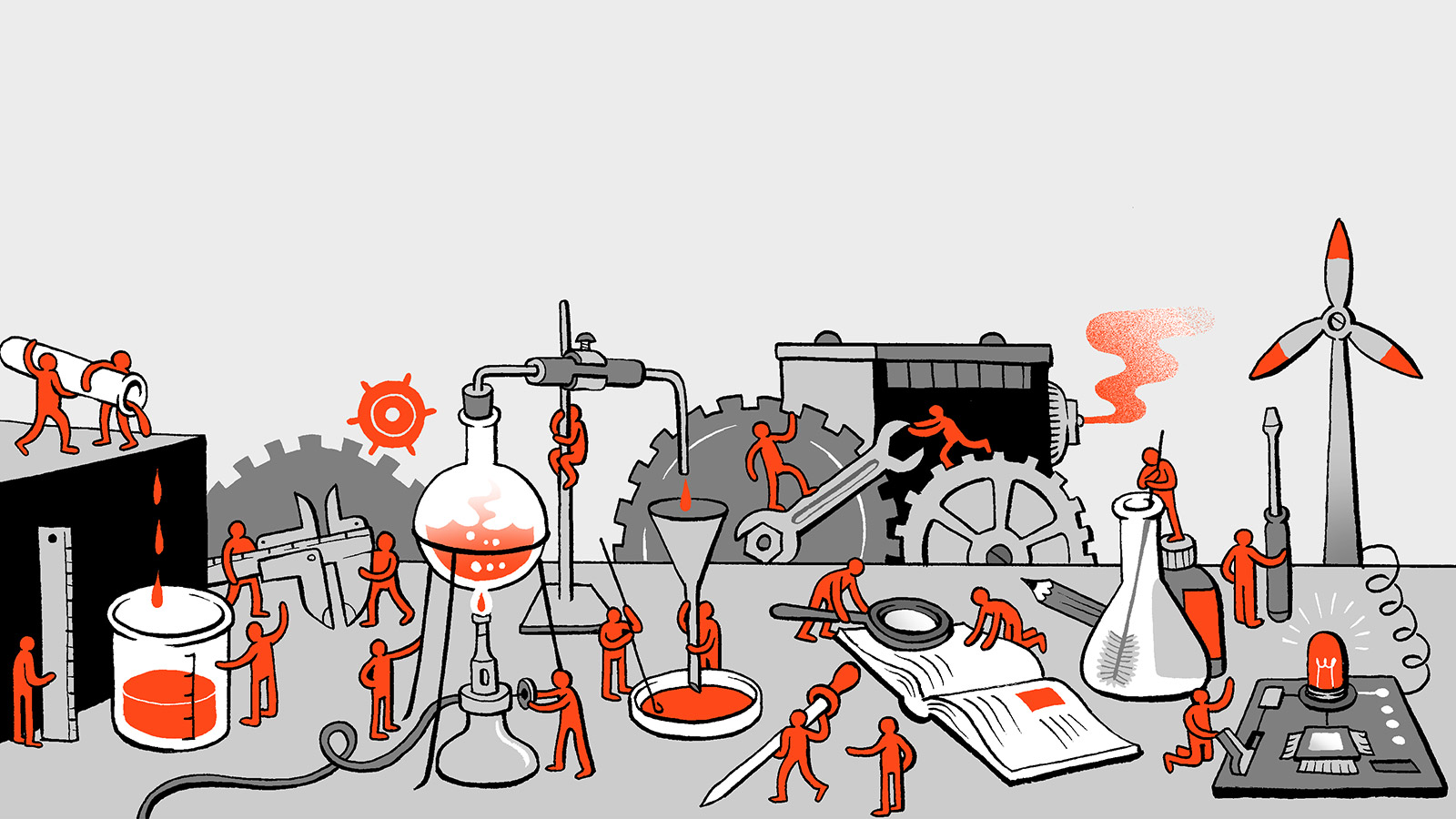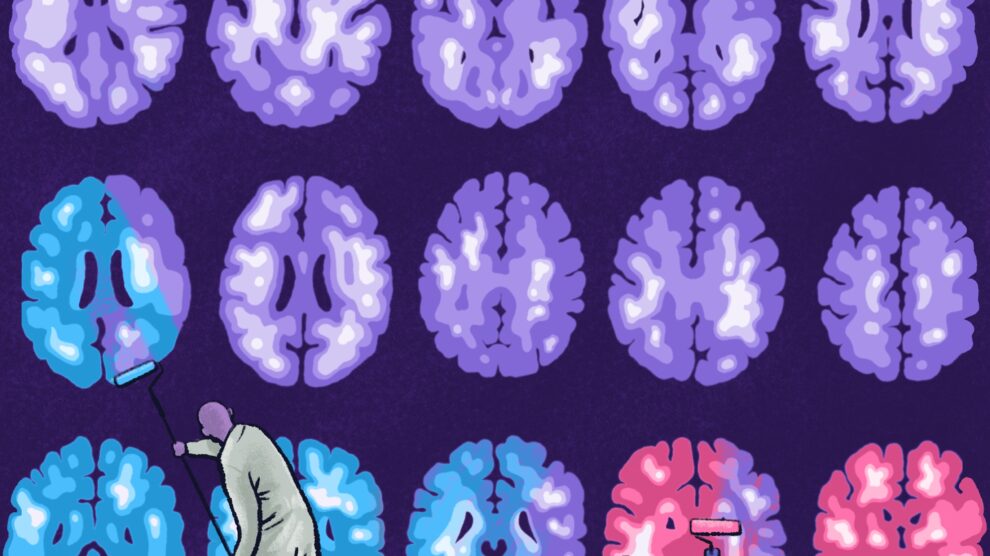A People’s Psychology of (Anti-)Racism
By Anup Gampa and Jeremy Sawyer
Volume 23, number 3, Bio-Politics

Mainstream psychology overwhelmingly focuses on individual bias as a means to conceptualize and remedy racism.1 What gets obscured in this understanding is that racism is bias combined with power, from the individual to institutional levels.2 Unsurprisingly then, when Anup asked his students and colleagues if racism against white people, so-called “reverse racism,” is possible, most said “yes.” In this article we illustrate the problematic nature of psychology’s various approaches to racism, from evolutionary psychology on the conservative wing to social psychology on the liberal flank. While not everyone who ascribes to an individual-level understanding of racism will end up a white supremacist, these frameworks are not helpful in creating more anti-racists. Instead of these mainstream currents, we advance an intersectional Marxist psychology as an alternative for understanding and helping to dismantle racism in the US.
The question of whether racism is somehow innate has long haunted psychology. For evolutionary psychologists (EPs), “the recurrence of racial classification across cultures and the commonalities between them suggest … [they] are the product of some universal psychological disposition.”3 EPs typically subscribe to “massive modularity,” the notion that humans have evolved a multitude of specialized, domain-specific mental organs that handle many or even all mental processes.4 While reticent to claim the existence of a race-specific mental module, given the historical recency with which humans encountered “racialized” others, many EPs have proposed that essentialist views on race are close by-products of a panoply of “folk-biology” modules that interpret people’s physical characteristics. One of these is a putative “living-kind module” evolved for distinguishing species, but that is now triggered by racialized markers, causing us to interpret different “races” as if they were actually different species.5 Underlying much of this work are notions that evolutionary theory can help to explain racism because it predicts people will help those who appear phenotypically similar (more likely to share their genes) and harm those who appear dissimilar, thereby increasing the proportion of their genes in future generations.6
Another well known EP argues that during the Pleistocene era humans evolved an “ethnicity module” for detecting different ethnic groups—defined as small cultural groups with similar language, clothing, behaviors, and a common biological lineage—that again represents them as different species.7 This was supposedly adaptive in terms of reproductive fitness because people learned not to interact or mate with other ethnic groups, thus saving the ostensibly high costs (in time and energy) of attempting to coordinate with groups with different cultural norms. In modern society, racialized markers such as skin color are claimed to trigger this ethnic detector, with racist consequences. One problem with this notion of small bands of prehistoric humans avoiding each other based on their ethnicity modules is the anthropological evidence of intergroup marriage alliances, ongoing communication and interaction between groups in prehistoric North America, and an absence of hostility or territoriality between modern hunter-gatherers living arguably comparable lifestyles.8 Moreover, despite EP claims that “humans tend to classify people into races when they meet other people with different phenotypes,” there is little evidence of people thinking in such racialized ways before the rise of Western doctrinal racism in the wake of the transatlantic slave trade.9 Yet many EPs deny this recent historical emergence of racial essentialism as a way of thinking about specific human groups.10 This ahistorical, biologically determinist outlook not only fails to provide a convincing origin story for racism, it also erases the historical ascendance of racism and racist pseudoscience used to justify colonialism and slavery.
While the liberal mainstream of social psychologists do not contend that humans have hardwired aversions to those with phenotypic differences, they nonetheless assume that we are innately biased against “outgroups,” defined as groups with which an individual does not identify.11 They typically posit that our minds evolved to navigate “a social world of groups and coalitions—the categories to which such arbitrary phenotypic distinctions such as ‘race’ are then mapped.”12 Though this position is less odious in not assuming innate tendencies to discriminate based on physical appearance and in granting a greater influence to racial stereotypes that infuse our culture, we believe psychologists have been too quick to accept an innate human bias against outgroups.
Evidence cited to support these arguments includes findings that young children can show biased attitudes toward others based on trivial or arbitrary characteristics, such as a randomly assigned t-shirt color or similar taste in snacks. Purportedly, this suggests an inbuilt tendency for preferring those who are “similar to oneself” over those who are different. However, the three-year-olds studied only showed the t-shirt bias when this arbitrary attribute was labeled and made socially meaningful by others.13 Similarly, although eleven-month-old infants preferred others with a similar taste in snacks, the same study also found this bias was completely eliminated when children were not prominently reminded that they preferred a different snack.14 A close reading of the study also reveals that children did not show any bias when the difference (having different color mittens) was randomly assigned by the experimenter. This suggests children do not “automatically” sort people into preferred and non-preferred groups, contrary to mainstream accounts. More likely, such ideas are learned through interaction with a society stratified by exploitation and oppression in a multitude of ways. This is further supported by the asymmetrical nature of this racist socialization, in which Black children (and adults) on average have no implicit racial bias while white children (and adults) do.15
Because mainstream psychology views racial bias as a fundamentally individual phenomenon, it suggests that racism is best addressed (if at all) by individually targeted methods. For example, a dominant liberal perspective is that implicit (automatic and non-conscious) racial bias is a problem “in the head” of individuals and is an important basis of societal racism. Yet their individualist solutions, such as anti-bias training, have proven ineffective in reducing individual bias, even on their own terms.16 For instance, laboratory studies have shown that any benefits to individual-level anti-bias interventions last no more than a few days.17 As ongoing police killings and brutality further highlight, individual-level solutions are also woefully inadequate in addressing the institutional racism of US policing—a recent study revealed New York Police Department (NYPD) implicit bias training had no impact on officers’ behaviors.18 Police responses to protests of extrajudicial killing have revealed further depths of brutality and have violated the civil rights of protesters.19 In sum, from evolutionary to social psychology, predominant theories individualize racism and disconnect it from power relations.
We are heartened to see the recent emergence of theories like the “bias of crowds” framework that conceive of implicit racial bias as the cognitive reflection of historical and systematic inequalities.20 We aim to build on this work in developing an intersectional Marxist psychology with the following elements. First, it approaches both the individual and their social context from a dialectical and historical analysis, and thus sees racism as a social and political construction.21 Second, it involves a firm criticism of capitalism and calls for its transformation. Third, it centers the oppressed and exploited as agents of change. Finally, it demands democratic control of resources such that “the free development of each will be the condition for the free development of all.”22
An intersectional Marxist psychology understands racism as integral to capitalist exploitation, and it considers anti-racist struggle essential in fighting both racism and capitalism. Crucially, our approach studies the sociopolitical history of the police as an institution to understand the psychology of police brutality and racism. By uncovering the origins of the US police in slave patrols and urban outfits used to break strikes and quell crowds, the essential role of police in defending capitalist inequality becomes clear.23 This helps us make sense of endemic racism among police departments, because not only are they rooted in slavery as an institution, their roles in maintaining class and racial hierarchies have been completely intertwined since their origins in the US.24 Thus, police are revealed as integral to the workings of capitalism, with racism a necessary feature rather than the result of a few “bad apples” or individual biases that could be shifted by requiring anti-bias training. In contrast, social psychologists argue for individualistic cognitive-behavioral interventions—like requiring police to raise their mindfulness of bias immediately before engaging with civilians. Such interventions, however, are Sisyphean when they ignore the material needs of capitalism to manage unemployment and social discontent through mass incarceration, particularly of BIPOC.25 If the police are fundamentally tasked with keeping the poor under heel, no amount of bias training will prevent them from doing so.
Doubling down on closer police partnerships, the American Psychological Association (APA) has expanded the usual repertoire of police trainings by recommending bias assessments prior to hiring, increasing mental health support, and training for working with mental health issues.26 However, police are not civil servants who protect and serve the people, but rather “violence workers” who are tasked, historically and presently, with breaking strikes, dispersing crowds, enforcing racial and class hierarchy, and using force as a means of social control.27 That the APA has a very different conception of policing is evident in its obfuscation of poverty and oppression as the key causes of crime, asserting, “Psychological research shows that a key factor shaping whether people obey the law is whether they trust the law and legal authorities.”28 Rather than “rebuilding trust” in police, a Marxist psychology helps us make sense of endemic racism among police departments. It aims at democratic control of resources for public safety and well-being, for instance by defunding police, and simultaneously investing in community health, education, and other services.
In our own work, by applying an intersectional Marxist framework emphasizing the dialectic between collective activity and individual consciousness, we found that anti-Black implicit (and explicit) bias in the US declined during the Black Lives Matter movement and especially during its high points of struggle.29 Importantly, this reduction in bias occurred across the political spectrum and despite right-wing backlash from “all/blue lives matter” campaigns. Other research suggests that LGBTQ movements and resulting policy changes have also decreased implicit bias and explicit discrimination.30 We think investigating how social movements change both society and mass consciousness is not only a hopeful direction politically, but would create a more scientifically holistic social psychology. Moreover, the new BLM movement’s full-throated calls for defunding and eventually abolishing the police provide a better roadmap for psychologists than continuing futile “partnerships” with police in hopes of reducing racial incidents. As Marxist psychologists, we are compelled through our solidarity with the oppressed to take BLM’s call as a starting point for further research.
Finally, an intersectional Marxist psychology makes clear that racism is bias plus systemic power within a larger capitalist system of oppression and exploitation. To end these psychologically debilitating conditions, a Marxist psychology demands democratic control of social resources such that “the condition for the free development of each is the free development of all.”31 This calls for psychological research in solidarity with social movements and the Black-led and now multiracial movement that is challenging systemic racism, and with the ultimate perspective of dismantling the police as an institution in the revolutionary transition to a socialist society.32 CUNY’s Public Science/Morris Justice is one example of community-driven collaboration between psychologists, community residents, and organizers. Focusing on neighborhood-level effects of the NYPD’s infamous “stop and frisk” policy that harassed civilians deemed “suspicious,” (overwhelmingly POC), this activism brought public pressure that contributed to ending the program. Despite police fear mongering that crime would skyrocket, crime dropped to record lows after stop and frisk ended.33 We call on like-minded psychologists and activists to create more such projects of resistance and to help build a genuine psychological science for the people. We have nothing to lose but our partnerships with police.
About the Authors
Anup Gampa, PhD, is a radical educator-scholar. He lives and teaches as a Marxist-queer-feminist at Harvey Mudd College in Claremont, California. He is primarily interested in understanding and dismantling systems of oppression through collective organizing and community building.
Jeremy Sawyer, PhD, is an assistant professor of Psychology at CUNY Kingsborough Community College. He studies children’s play and language development from a Vygotskian perspective, and teaches courses on disability, educational psychology, and human development. He researches the psychology of social class, worker alienation under capitalism, and how social movements like Black Lives Matter can transform our implicit and explicit mental processes. Twitter: @jeremyesawyer
References
- Sophie Trawalter, Diane-Jo Bart-Plange, and Kelly M. Hoffman, “A Socioecological Psychology of Racism: Making Structures and History More Visible,” Current Opinion in Psychology 32 (2020): 47–51, https://doi.org/10.1016/j.copsyc.2019.06.029.
- Ibram X. Kendi, How to Be an Antiracist (New York, NY: One World, 2019).
- Edouard Machery and Luc Faucher, “Why Do We Think Racially?” in Henri Cohen and Claire Lefebvre, ed., Handbook of Categorization in Cognitive Science (Amsterdam: Elsevier, 2005), 1009–33.
- John Tooby and Leda Cosmides, “The Psychological Foundations of Culture,” in The Adapted Mind (New York: Oxford University Press, 1992), 19–136; Steven Pinker, How the Mind Works (New York: W. W. Norton and Co., 1997).
- Scott Atran, “Comment on F. J. Gil-White’s article ‘Are ethnic groups biological “species” to the human brain? Essentialism in our cognition of some social categories,” Current Anthropology 42 no. 4 (2001): 537–538, http://doi.org/10.1086/321802.
- D. B. Krupp, and Peter D. Taylor. “Social Evolution in the Shadow of Asymmetrical Relatedness,” Proceedings of the Royal Society B: Biological Sciences, 282, no. 1807 (2015): 1–6, http://doi.org/10.1098/rspb.2015.0142.
- Francisco Gil-White, “Are Ethnic Groups Biological ‘Species’ to the Human Brain? Essentialism in our cognition of some social categories,” Current Anthropology, 42 no. 4 (2001): 515–554, https://doi.org/10.1086/321802.
- Jonathan Haas, “The Origins of War and Ethnic Violence,” in John Carman and Anthony Harding, ed., Ancient Warfare: Archaeological Perspectives (Stroud, UK: Sutton Publishing, 1999): 11–24.
- Machery and Faucher, “Why Do We Think Racially?” 1014; John P. Jackson Jr., “Cognitive/Evolutionary Psychology and the History of Racism,” Philosophy of Science 84, no. 2 (April 2017): 296–314, https://doi.org/10.1086/690720.
- Ron Mallon, “Was Race Thinking Invented in the Modern West?” Studies in History and Philosophy of Science Part A 44, no. 1 (2013): 77–88, https://doi.org/10.1016/j.shpsa.2012.10.001.
- Christie Aschwanden, “Psychologists Looked In The Mirror … And Saw A Bunch Of Liberals,” FiveThirtyEight, July 2, 2018, accessed August 4, 2020, https://fivethirtyeight.com/features/psychologists-looked-in-the-mirror-and-saw-a-bunch-of-liberals/; Jason Marsh, Rodolfo Mendoza-Denton, and Jeremy Adam Smith, Are We Born Racist?: New Insights from Neuroscience and Positive Psychology (Boston: Beacon Press, 2010).
- Carlos David Navarrete, Melissa M. McDonald, Ludwin E. Molina, and Jim Sidanius, “Prejudice at the nexus of race and gender: an outgroup male target hypothesis,” Journal of Personality and Social Psychology 98, no. 6, (2010): 933-945, https://doi.org/10.1037/a0017931.
- Meagan M. Patterson and Rebecca S. Bigler, “Preschool Children’s Attention to Environmental Messages about Groups: Social Categorization and the Origins of Intergroup Bias,” Child Development 77, no. 4 (2006): 847–860, http://doi.org/10.1111/j.1467-8624.2006.00906.x.
- Neha Mahajan and Karen Wynn, “Origins of ‘Us’ Versus ‘Them’: Prelinguistic Infants Prefer Similar Others,” Cognition 124, no. 2 (2012): 227-233, https://doi.org/10.1016/j.cognition.2012.05.003.
- Anna-Kaisa Newheiser and Kristina R. Olson, “White and Black American Children’s Implicit Intergroup Bias,” Journal of Experimental Social Psychology 48, no. 1 (2012): 264–270, https://doi.org/10.1016/j.jesp.2011.08.011.
- Frank Dobbin and Alexandra Kalev, “Why Doesn’t Diversity Training Work? The Challenge for Industry and Academia.” Anthropology Now 10, no. 2 (2018): 48–55, https://doi.org/10.1080/19428200.2018.1493182.
- Calvin K. Lai et al., “Reducing Implicit Racial Preferences: II. Intervention Effectiveness Across Time.” Journal of Experimental Psychology: General 145, no. 8 (2016): 1001–16, https://doi.org/10.1037/xge0000179.
- Martine Kaste, “NYPD Study: Implicit Bias Training Changes Minds, Not Necessarily Behavior.” NPR, accessed on October 16, 2020, https://www.npr.org/2020/09/10/909380525/nypd-study-implicit-bias-training-changes-minds-not-necessarily-behavior.
- “Amnesty International Documents Widespread Police Violence Against Protesters For Black Lives,” Amnesty International, accessed on October 16, 2020, https://web.archive.org/web/20201107015838/https://www.amnestyusa.org/protest-map/.
- Keith B. Payne, Heidi A. Vuletich, and Jazmin L. Brown-Iannuzzi, “Historical Roots of Implicit Bias in Slavery,” Proceedings of the National Academy of Sciences 116, no. 24 (2019), 11693–11698, https://doi.org/10.1073/pnas.1818816116.
- Stephen D. Ashe and Brendan McGeever, “Marxism, Racism and the Construction of ‘Race’ as a Social and Political relation: An Interview with Professor Robert Miles,” Ethnic and Racial Studies 34, no. 12 (2011): 2009–2026.
- Paul Le Blanc, From Marx to Gramsci: A Reader in Revolutionary Marxist Politics (New Jersey: Humanities Press, 1996): 2–10.
- Emily Tamkin, “The History of America’s Racist Police, from Slave Patrols to Present,” The New Statesman, June 13, 2020, accessed on October 12, 2020, https://www.newstatesman.com/world/north-america/2020/06/history-america-s-racist-police-slave-patrols-present; Brenden Beck, “The Role of Police in Gentrification,” The Appeal, August 4, 2020, accessed on October 12, 2020, https://theappeal.org/the-role-of-police-igentrification-breonna-taylor/; Sam Mitrani, “The Police Were Created to Control Working Class and Poor People, Not ‘Serve and Protect,’” In These Times, January 6, 2015, accessed on October 12, 2020, https://inthesetimes.com/article/police-and-poor-people.
- Jill Lepore, “The Invention of the Police,” The New Yorker, July 13, 2020, accessed on November 4, 2020, https://www.newyorker.com/magazine/2020/07/20/the-invention-of-the-police; Matthew Desmond, “In Order to Understand the Brutality of American Capitalism, You Have to Start on the Plantation,” The New York Times, August 14, 2019, accessed on November 4, 2020, https://www.nytimes.com/interactive/2019/08/14/magazine/slavery-capitalism.html.
- Christian Parenti, “The Making of the American Police State,” Jacobin, July 28, 2015, accessed on August 12, 2020, https://www.jacobinmag.com/2015/07/incarceration-capitalism-black-lives-matter.
- Kim I. Mills, “APA Urges Closer Partnerships Between Police, Behavioral Experts To Stem Racial Incidents,” American Psychological Association, accessed August 4, 2020, https://www.apa.org/news/press/releases/2020/06/police-partnerships.
- Alex S. Vitale, The End of Policing (New York: Verso Books, 2017).
- Mills, “APA Urges Closer Partnerships.”
- Jeremy Sawyer and Anup Gampa, “Implicit and Explicit Racial Attitudes Changed During the Black Lives Matter movement,” Personality and Social Psychology Bulletin 44, no. 7 (2018): 1039–1059, https://doi.org/10.1177/0146167218757454.
- Eugene K. Ofosu et al., “Same-Sex Marriage Legalization Associated with Reduced Implicit and Explicit Antigay Bias,” Proceedings of the National Academy of Sciences 116, no. 18 (2019): 8846–8851, https://doi.org/10.1073/pnas.1806000116.
- Karl Marx and Friedrich Engels, The Communist Manifesto (London: Penguin Books, 2002): 12.
- Amy Goodman and Angela Davis, “Angela Davis on Abolition, Calls to Defund Police, Toppled Racist Statues & Voting in 2020 Election,” Democracy Now, June 12, 2020, accessed on November 6, 2020, https://www.democracynow.org/2020/6/12/angela_davis_on_abolition_calls_to.
- Gaurav Jashnani, Priscilla Bustamante, and Brett G. Stoudt, “Dispossession by Accumulation: The Impacts of Discretionary Arrests in New York City,” Race and Justice 10, no. 3 (July 2020): 269–96, https://doi.org/10.1177/2153368717742476; “Crime Falls As New York Abandons Stop-and-Frisk,” Equality Justice Initiative, accessed on August 13, 2020, https://eji.org/news/new-york-crime-falls-as-police-end-stop-and-frisk.





